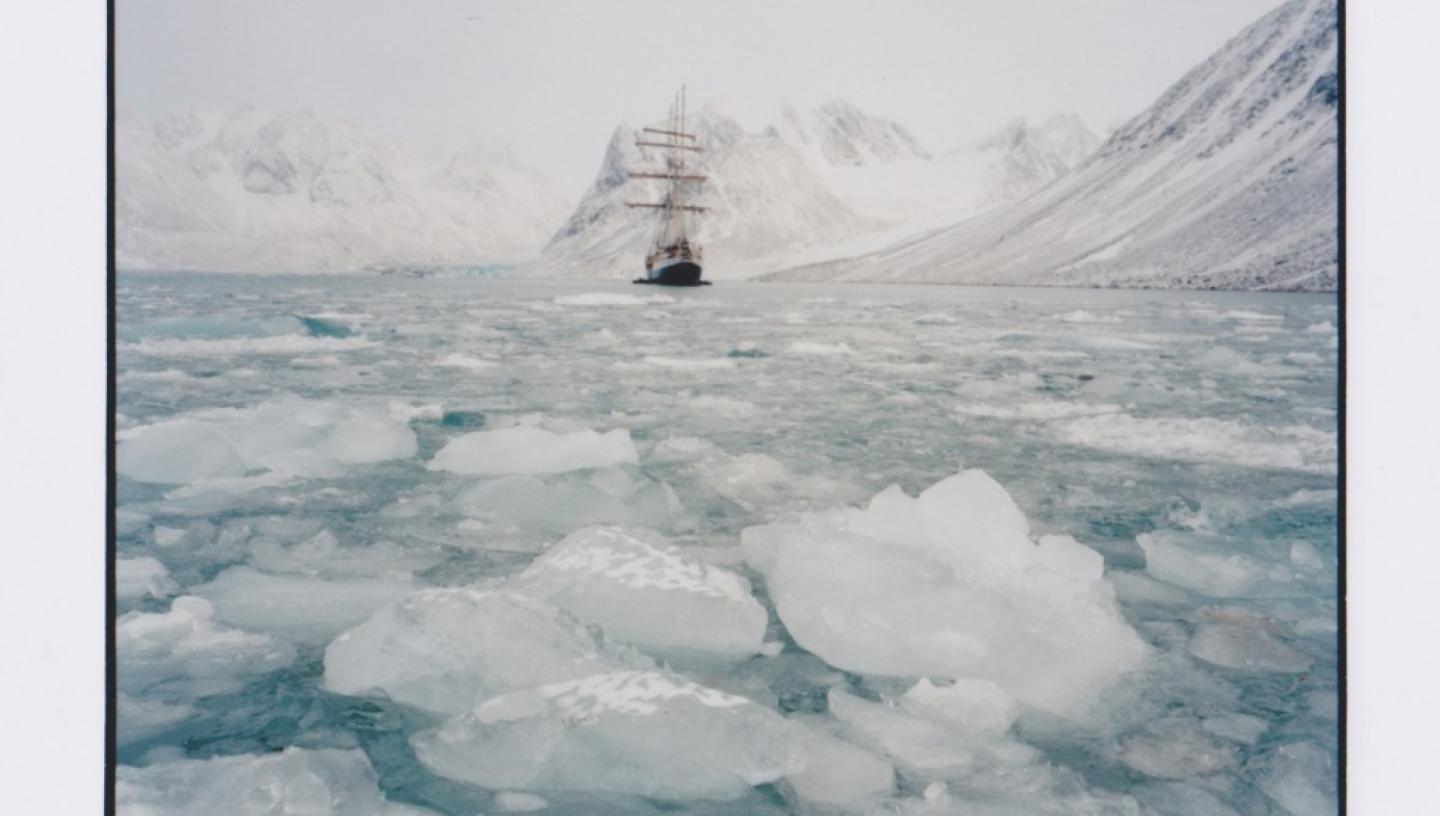
04 Jun 2015
Tamsin Relly, Artist in Residence at Royal Museums Greenwich in 2014, talks about her successful residency for RE·THINK: Environment and reflects on the impact that discussing her own Arctic voyage had on our visitors
Following an expeditionary residency onboard a tall ship in Svalbard last year, the Maritime Museum invited me to join the RE:Think: Environment program for a three week residency, with the opportunity to reflect on my trip to the Arctic and research the museum's polar archives. I was given a very dreamy (and somehow always sunny!) space to work next to the RE:Think Gallery.
For the first time since my trip to the Arctic, I laid out all the material and photographic images I had gathered from the journey and the work I had made whilst onboard the ship, which included drawings, monotypes and etching plates still in process. I had a small library of books, maps and contact sheets from film I had shot and a projector to start exploring some of my video footage from the trip. I moved a small etching press in, with everything you need for making monotypes and dry point etchings. The space evolved over my time there as more things from the trip surfaced and as I produced new work in the space and drew material from the museums archives.
As part of my residency, visitors were invited to join me for afternoon cake and tea. This allowed them to hear more about my trip and processes, learn a little about the impact of climate change in the Arctic and make a monotype exploring a Polar theme. Cake and tea had become a daily ritual on the ship I was on – we would make land fall by dinghy most days, and on our return from the cold there were always hot drinks and something sweet or freshly baked for us to look forward to. In RE:Think I served the chilli tea I had kept with me in my flask – a helpful way of keeping warm, while trying to draw a glacier! [[
A monotype is a unique print created by painting with an oil or water based medium onto a metal or acrylic plate and running it through a press to transfer the image onto paper. I had painted a number of water-based plates whilst I was on the ship, as they could be left to dry, and carried home to print on my return to the studio. I had to work indoors for these, as I can confirm that water colours do freeze in the Arctic – so despite my best attempts, it was impossible to work on deck. It’s a bit of a tricky and unpredictable medium as the paint does what it wants on the slippery surface of the plate, dries in unexpected ways and everything comes out in reverse. This unpredictability is a huge part of its appeal for me – there’s a kind of alchemy to it all and the results are always a surprise.
I was delighted by how the space drew participation from every age group and many backgrounds and professions: from 3 year olds to art students, artist colleagues and museum staff. I was fascinated by, and learnt a lot from the diversity of peoples approach to the printmaking medium. It’s always a privilege to work with children; there is a freedom to their mark making - before they’ve grown to be self conscious of it - that one can only dream of as a grown up.
Visitors spent time engaging with some of the work I had made on the trip; my work in progress; and my research material – both photographic images I shot while in Svalbard and some of the archival imagery I had sourced from the museums archives. Through this, I hoped to offer a moment to hold in mind the wonder of the Arctic, and to invite a dialogue about the impact of climate change on the region. Having shared a little of a first hand experience of the North and creating something small that mattered to them, people seemed to walk away from the experience a little more invested and empathetic toward the vulnerability of The Polar regions and the importance of our consideration of it – a subject easily so politicized. Both children and their parents commented on how they had been learning about the Arctic and Climate Change at school and how meaningful it was to have it brought to life in this way.
During the residency, a group of Greenpeace activists boarded a Shell operated rig as part of a protest named The Crossing in the hope of drawing attention to the company’s plans to restart its offshore drilling campaign in the Arctic. Because of the topical nature of the interception, we spent a few days of the residency making prints inspired by their campaign.
Tamsin Relly makes new work in response to receding glaciers witnessed in Svalbard and findings in the museums polar archives.